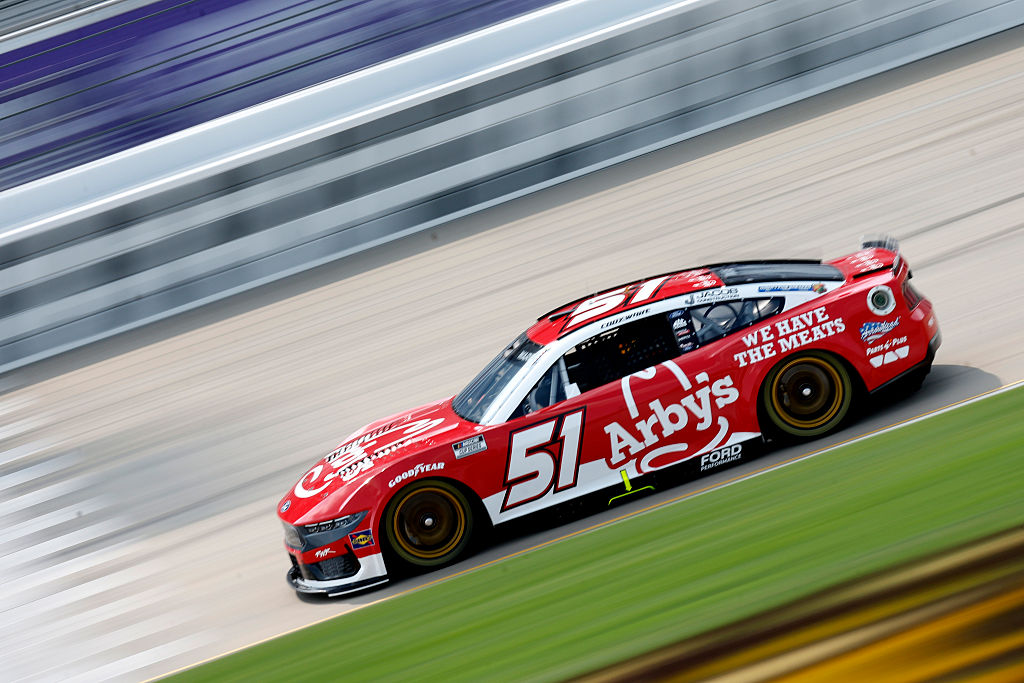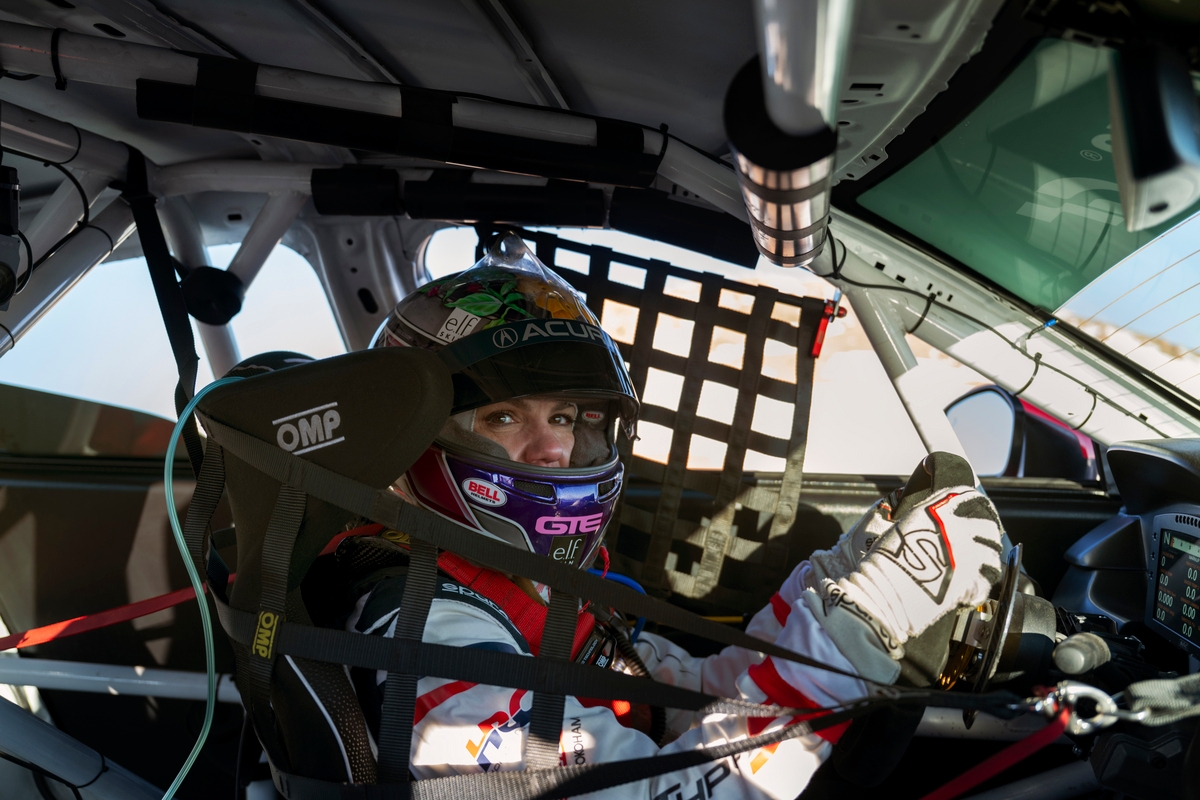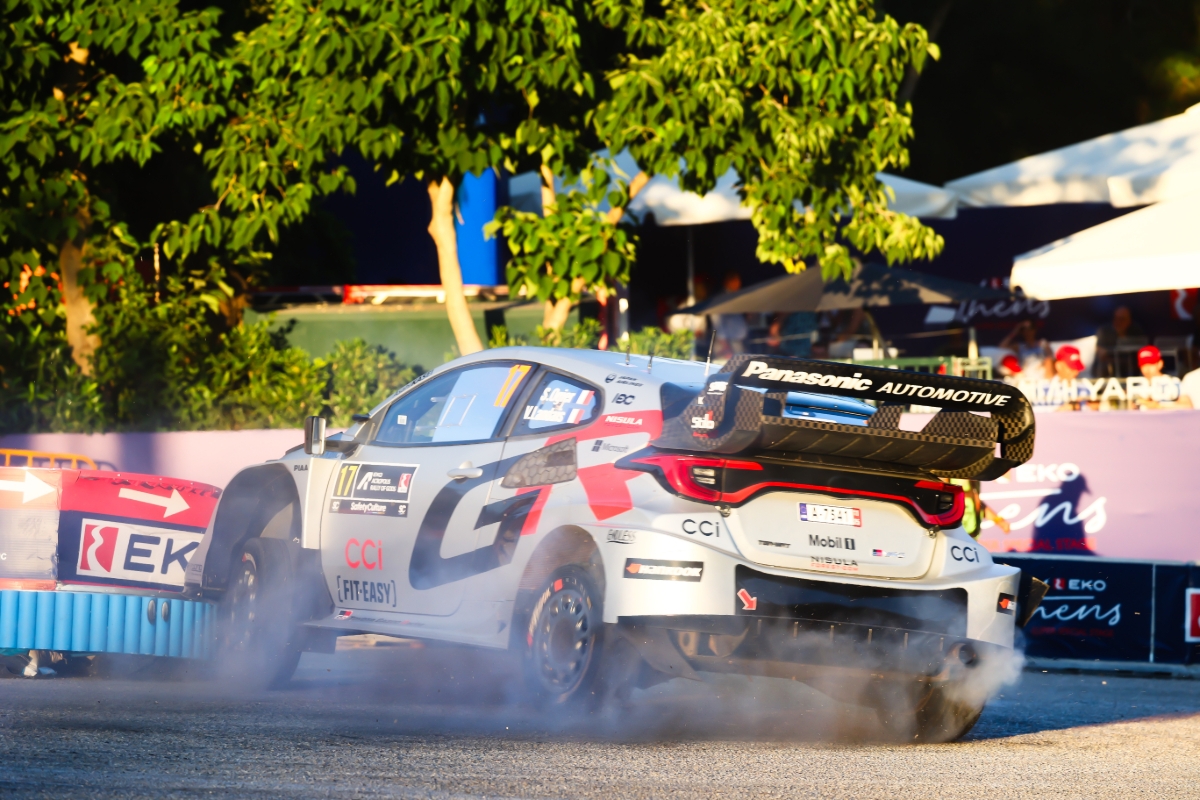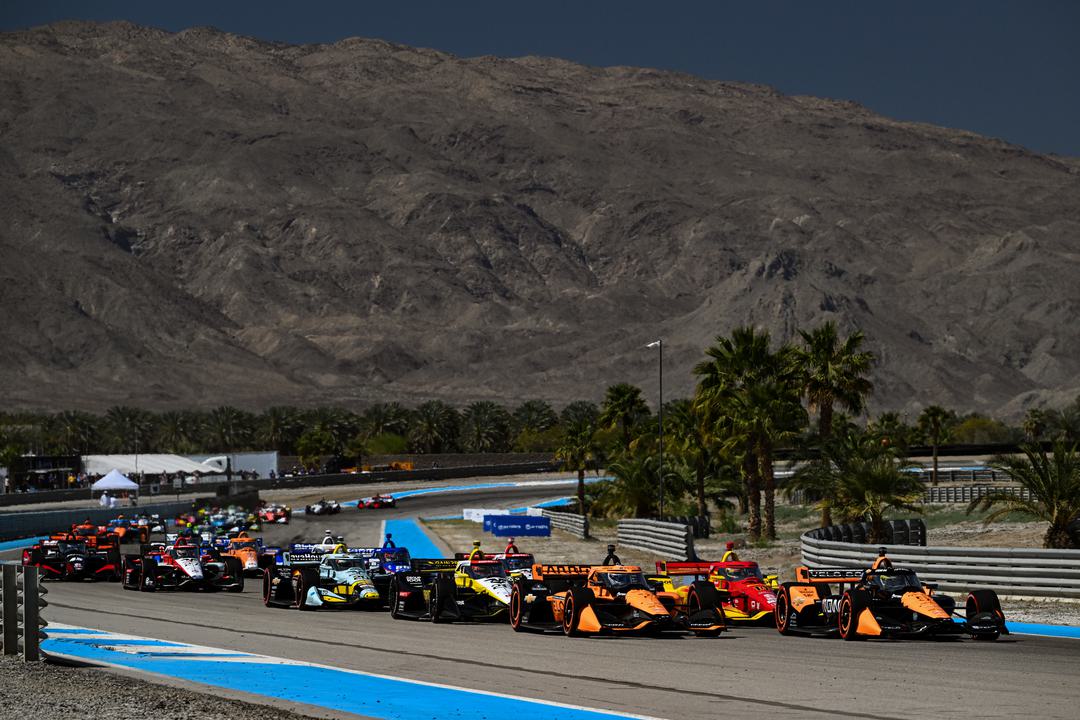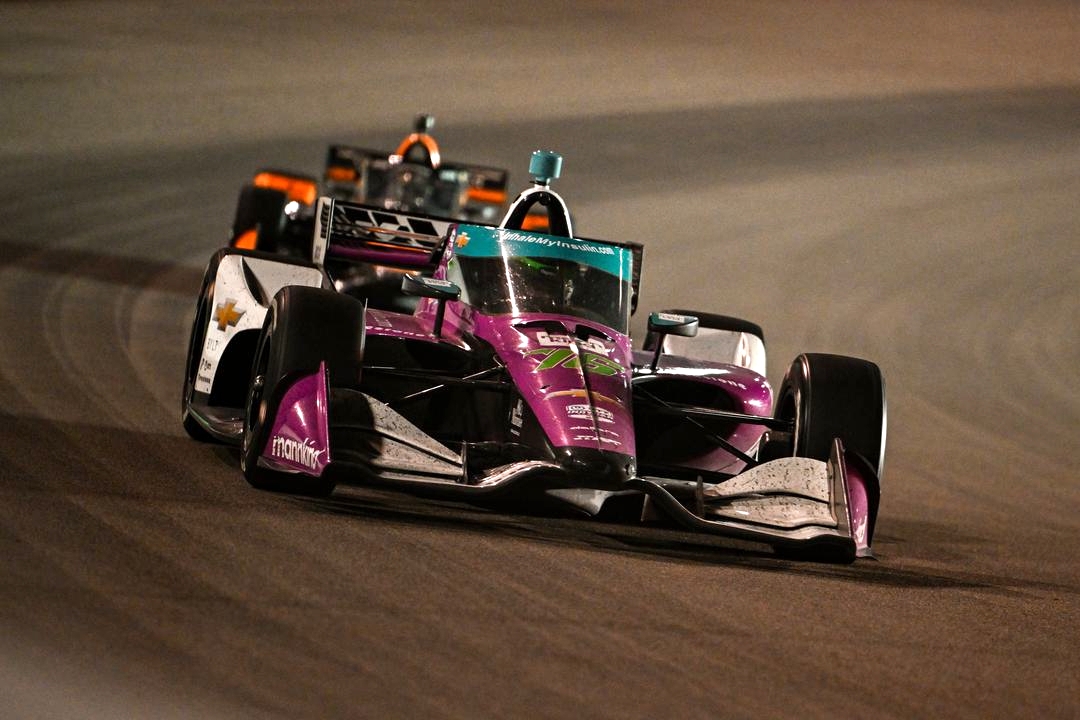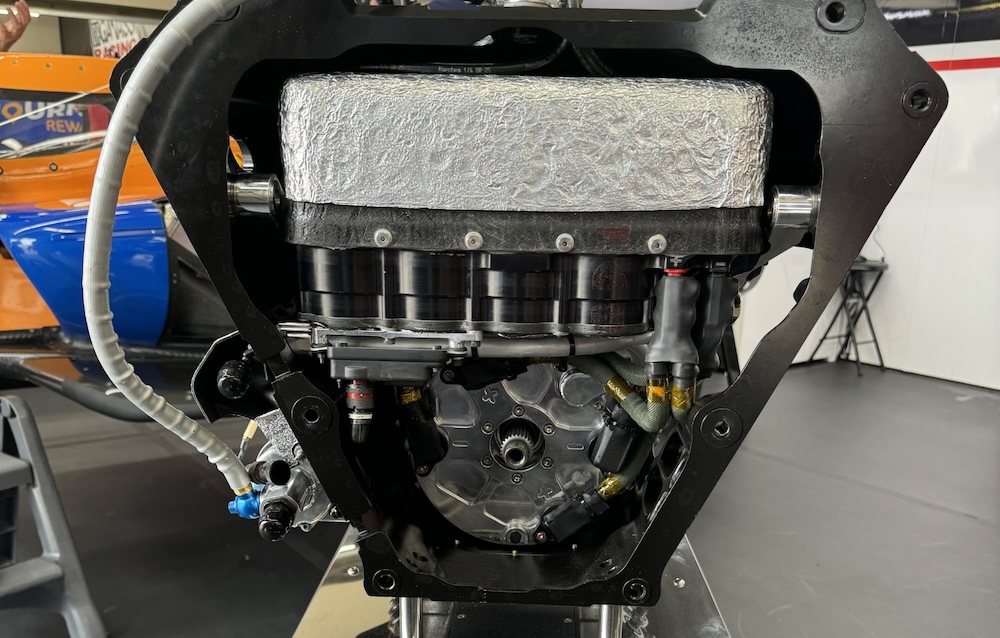
ShareThis is disabled until you accept Social Networking cookies.
RACER’s inside look at IndyCar going hybrid, part 2
The NTT IndyCar Series’ midseason shift to hybrid electric powertrains is its biggest technological change since it introduced turbocharged V6 engines in 2012. There’s a lot to try and understand in the changeover that starts this weekend in Mid-Ohio, so I’ve tried to come up with as many questions and answers as possible to help in the process.
With 65 total Q&A topics to cover, we’ve done Part 1 on the background basics of the energy recovery systems (ERS), and here, we’re running the rest -- on a wide range of subjects -- if you’re interested in IndyCar’s new hybrid direction.
WILL THE FOUR TEAMS THAT DID MOST OF THE HYBRID TESTING HAVE AN ADVANTAGE?
They should. Frankly, it would be a shock (bad pun alert) if Andretti Global, Arrow McLaren, Chip Ganassi Racing, and Team Penske don’t have a big advantage over the other six teams who’ve done minimal hybrid running by comparison.
And to be fair, hybrid or not, those are also the four teams that win almost every race, especially Ganassi and Penske who did more than anyone, which is why they were chosen by their respective engine suppliers to handle each manufacturer’s ERS testing.
WHY DIDN’T THEY SPREAD THE MAJORITY OF TESTING EQUALLY ACROSS ALL 10 TEAMS?
Because that wouldn’t have gotten the series to going hybrid this weekend. The other six teams were brought into testing once the "final spec" ERS unit was produced. It wasn’t great, but it was by design.
Nike doesn’t develop a new basketball shoe with an NBA player who comes off the bench and scores five points a game. They work with the superstars to develop the best shoe possible before it’s made available to the rest of the players. Same approach here.
IS THERE ANYTHING ON THE CARS THAT WILL INDICATE WHEN THE ERS UNITS ARE FUNCTIONING?
Nope. If you’re familiar with Formula 1 and its hybrid engines, that series uses the lights on the back of the cars to tell drivers and fans when harvesting is being done. Those lights are instructed to flash. In IndyCar, at least for the half-season ahead, the cars won’t tell you when hybrid running is happening.
SO HOW WILL WE KNOW WHEN DRIVERS ARE HARVESTING OR DEPLOYING?
Well, if you’re at the track and watching the cars go by, there’s nothing to alert you to the ERS units being active. But if you look away from the cars and stare at your phone or tablet, there will be notifications available on the TV broadcasts, and via the IndyCar app.
If you’re watching from home, it should be easy to track. If you’re trackside, it will require looking away from what’s in front of you to know when hybridization is happening.
And be ready to see the usage alerts on the app or on NBC/USA/Peacock pop up and disappear in a flash. More on the why, later.
ARE THE ERS UNITS RELIABLE?
There have been some ERS failures in testing with the final-spec units, but they’ve often been down to user error. There’s a new and more complex process involved with starting the cars where the ERS need to be set to a certain state before the MGU is meant to be spun. If, for example, a team wants to plug the external starter in and bump the ICE once or twice with the ignition off to check something, they can’t forget to go through the process to wake up and ready the ERS because rotating the MGU without waking it up -- it’s on the same shaft that spins the ICE -- will break the MGU.
And if that happens, the car needs to be split at the back of the ICE and the spec bellhousing/ERS unit needs to be changed. FWIW, it’s already happened.
But outside of that, the new ERS units have done more than 20,000 laps and over 32,000 miles of testing, and most of it has been positive. Using recent history as a guide, there’s a reason to have optimism for what’s about to happen over 80 laps on Sunday.
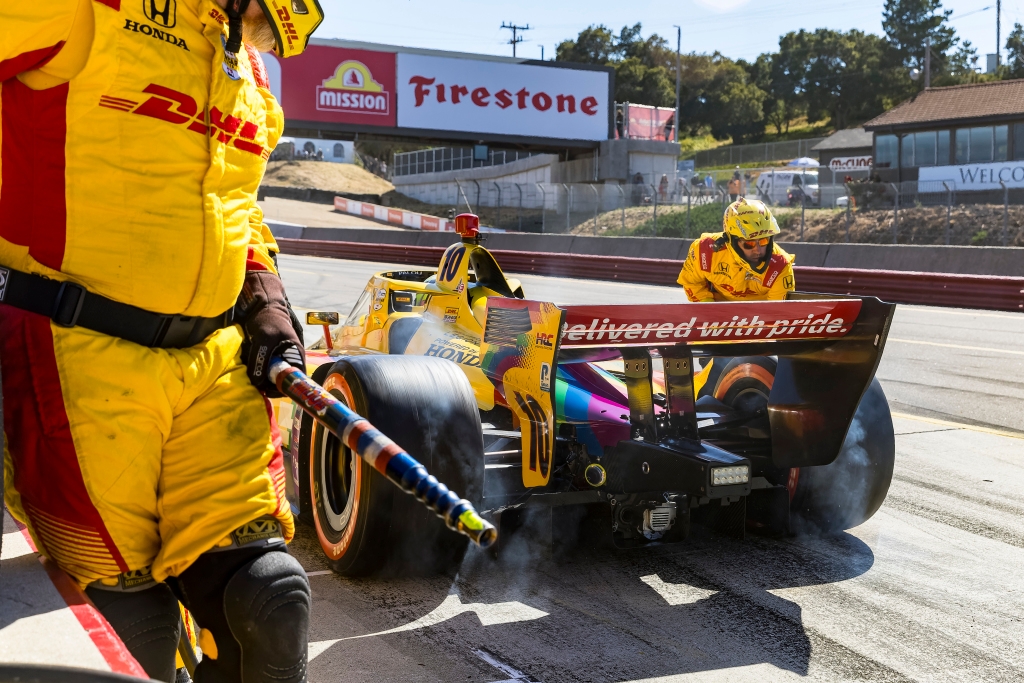
CAN DRIVERS USE THE ENERGY RECOVERY SYSTEM TO START THEIR CARS?
Yes. Will they? Only on rare occasions.
A driver’s ability to use the ERS to fire the internal combustion engines (ICE) is only available when something bad has happened out on the circuit, like spinning and stalling.
SO DRIVERS CAN START THEIR CARS, BUT IT’S LIMITED TO WHEN THEY’RE ON TRACK?
Correct. If you’ve seen and loved the sights and sounds of IMSA’s hybrid GTP cars pulling away from their pit boxes on full EV power for a few seconds before firing up the ICE to take them the rest of the way out…that won’t be happening here.
IndyCar has opted to introduce hybridization in a way that places a lower usage of the system during the half-season ahead. Specifically, the series wants to place as little strain on the MGUs as possible when they aren’t being used on track, and as such, you’ll see mechanics continue to plug in external starters and fire the engines on pit lane and on the starting grid just as they have for decades.
The dawn of IndyCar’s hybrid era will indeed begin with crew members manually starting the cars Friday afternoon…which is interesting.
As well, self-starting while practicing, qualifying, or racing, is limited to road and street courses. Self-starting will be disabled by the series on the ovals.
IF THEY CAN’T LEAVE THE BOX ON EV POWER, WILL DRIVERS USE THE ERS UNITS ELSEWHERE ON PIT LANE?
No, they will not.
Drivers won’t be allowed to enter into pit lane on ERS power, do an EV burnout and launch from their pit box, or use ERS power after they’ve left the box, nor will drivers be allowed to harvest energy while on pit lane. In simple terms, from pit-in to pit-out, IndyCar’s ERS units will be unavailable for use.
The series will manage this by sending signals to the cars from race control, using the same MyLaps communications system that it uses to turn push-to-pass on and off, that tells the same McLaren-TAG 400i engine control unit (ECU) to disable the ERS unit when cars cross the pit-in timing loop, then to enable the ERS when cars cross the pit-out timing loop.
WHAT ABOUT BEHIND THE PACE CAR?
That’s also a no. The energy storage systems (ESS) do not hold enough juice to propel the car on full EV power at the speeds pace cars maintain, so there will be no EV running under caution with the ICE turned off to save the 100-percent renewable fuel from Shell that lives in the 18.5-gallon tanks.
SO WILL WE SEE DRIVERS USE EV POWER ALONE AT ANY POINT DURING EVENTS?
Yes!
But there’s one and only one situation where it’s allowed, and that’s while using reverse. The ERS’ motor generator unit (MGU) will be used to roll the car backwards. And if the engine is stalled, the driver can use the ERS to start the ICE and do whatever’s necessary -- simply pull away or spin the car around -- with the turbo V6 ICE.
BUT WHAT IF THE ESS IS EMPTY WHEN THEY’VE STALLED OR NEED TO GO IN REVERSE?
That’s another smart thing the series has done with the ERS.
The ESS won’t be allowed to reach a state of being at zero-percent charge. In fact, a decent amount of energy is always held and protected in the ESS just so drivers will have enough juice to restart their cars at least once.
Imagine if the maker of your phone gave you a charge range of 100 to zero percent, but in reality, zero was actually 20 percent, which covers you in case of an emergency, and that’s what IndyCar has done with its ESS.
Even though the ESS might be "empty" in terms of power no longer being available to make the car go faster, the ESS is configured to always have the driver’s back by holding onto extra energy in case of a stall or need to reverse.
Once the driver gets going again, they’ll need to harvest and replenish the ESS to refill the supercapacitors.
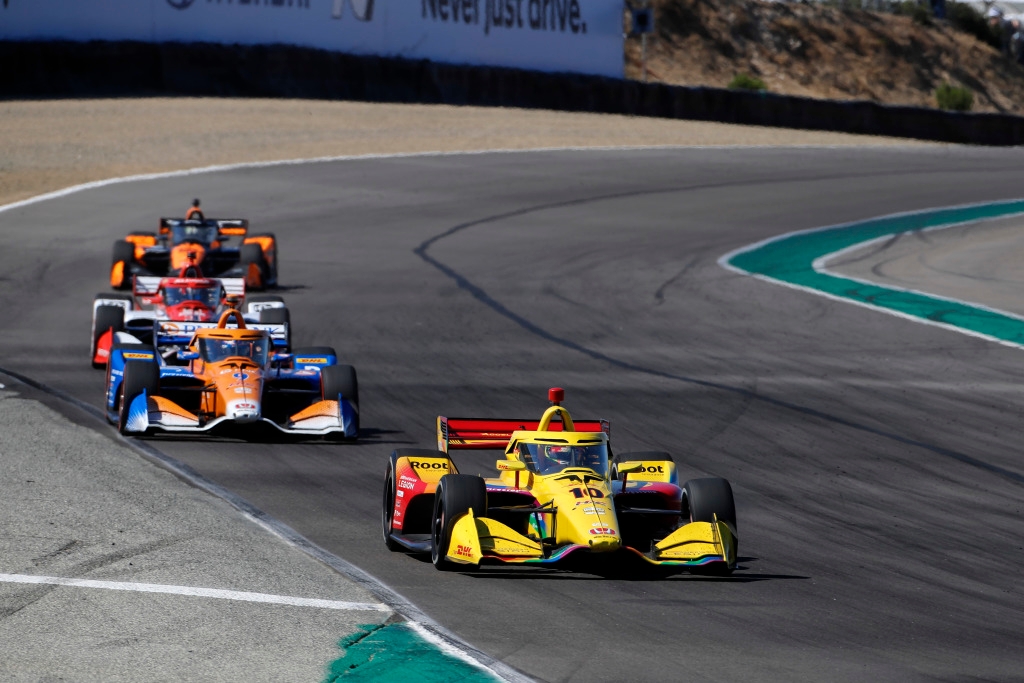
WILL GOING HYBRID ALLOW DRIVERS TO EXTEND THEIR FUEL RANGE, OR KEEP EVENTS FROM BECOMING "FUEL SAVE" RACES?
No, not really. But for the sake of marketing and promotions, there’s been an effort to suggest it’s a range extender.
Could it help to save tiny amounts of fuel? Yes, but this ERS package is all about adding power on top of what the ICE makes for power. It isn’t being used to give the ICE a break, since we know the cars will never run strictly on EV power (except for reversing), nor will the ERS be used to significantly share the responsibility of propelling the cars.
At most events, the ICE makes over 700hp (it’s lowered at the superspeedways), and the ERS is capable of helping with 60hp for short durations. If the ERS was putting up 250hp and that allowed the ICE to fall back to 500hp, there would be definite fuel saving going on. But that isn’t what’s happening, so there’s no significant fuel-saving opportunities with this first-generation hybrid IndyCar.
Granted, there will be slight fuel saving coming off slow corners where the ERS can assist acceleration -- using the MGU to fill in some missing torque, known as "torque fill" when the ICE is at low rpm like coming off of the hairpin at Long Beach -- by briefly easing the acceleration burden on the ICE, but the concept for IndyCar’s system has little to do with saving fuel and extending fuel range. It’s about giving the cars more punch.
LET’S GET INTO THE ACTION SIDE OF HYBRIDS. HOW IS THE POWER IT GIVES DIFFERENT FROM PUSH-TO-PASS?
This is another cool decision made by IndyCar.
Push-to-Pass, which only works on road and street courses, comes with a per-race time limit. At Mid-Ohio, for example, drivers have 200 seconds of turbo-based push-to-pass to use, which gives them about 60hp when it’s active. It’s an 80-lap race, and while they don’t have to use all of the P2P, drivers and teams will strategize when and where it’s best to apply that extra 60hp while it lasts.
With the ERS, there’s no time limit on its use, nor will it stop contributing its own 60hp before the end of the race. From the first lap to the last, drivers will have ERS power to use, even after they’ve run out of P2P.
SO, THE ERS IS ALWAYS ABLE TO GIVE 60HP…WHENEVER THE DRIVER WANTS IT ON EACH LAP?
Well, no.
OK, EXPLAIN THAT ONE.
IndyCar is going in F1’s direction with a per-lap energy usage cap. Instead of setting the rules like P2P where there’s a finite amount of time it will work in the race before it goes to sleep for good, IndyCar has set the Maximum Deployment Energy Per Lap structure where every driver has a limited amount of ERS power they can deploy each lap.
So while the ability to harvest and deploy energy never stops in the context of a complete race, the ESS will stop giving power to the driver -- they can hit the deploy button on the steering wheel all they want, but it will be dead -- once the maximum amount of energy per lap has been consumed.
If you burn all of the ESS energy you’re allowed to use on any lap, the ERS will go to sleep for the rest of the lap. But it comes back to life when it crosses the start/finish line and the process starts over again on the next lap and the next lap…
DOES IT GO TO SLEEP COMPLETELY, NO MATTER WHAT?
There’s one scenario where it will keep working, partially, at least.
I’m told by the series that while the ERS will go to sleep in the sense that it won’t deploy power after the per-lap limit has been hit, drivers can continue to harvest -- provided the ESS isn’t fully charged -- with the MGU, which means the ERS can be used to prepare for deploying on the next lap, but it won’t answer a driver’s call to give the 60hp until a new lap begins.
IS THE MAXIMUM ENERGY PER LAP ROUTINE CONFUSING?
It can be. But there’s an easy way to think of how IndyCar’s hybrid will be regulated: Before each race, the series will declare how much hybrid energy can be used per lap. That will be expressed in joules, which is a standard international measurement of energy like kilojoules and megajoules. But what we’re looking for from IndyCar is how many seconds the ERS power can be used each lap.
Just like IndyCar says how many seconds of P2P is available, I’m hoping the series will start announcing how many seconds of ERS power -- deployment -- can be used on each lap. I’ve asked them to do this to make things easy for everyone to digest, and so far they haven’t, but we’ll see if that advice is taken in the future.
HOW WILL THE SERIES COME UP WITH THAT PER-LAP USAGE TIME AT EVERY RACE?
It will be based on the length of the lap. IndyCar is looking to size the ratio of usage to be the same, no matter how big or small the track. Longer tracks will have more ERS deployment time; shorter tracks will have less, all done to give the same approximate contribution of power on a lap that’s 18 seconds or 118 seconds.
WHAT’S THE ESTIMATED DEPLOYMENT TIME PER LAP THIS WEEKEND?
The series has set a limit of 280 kilojoules per lap at Mid-Ohio, and based on the predicted lap times, look for something in the range of eight seconds of that 60hp ERS deployment to be available if drivers keep charging the ESS throughout the lap.
The series also just adjusted the kJ limit to open the event on Friday to 310kJ in the first practice session, which should bump the usage time to around nine seconds per lap.
At Iowa next weekend, it’s 105 kJ, and based on the recent test there, it was around three seconds of ERS power per lap.
WILL THE ERS POWER BE AVAILABLE ALL WEEKEND, EVERY WEEKEND?
Yes. That 60hp/33.2 lb-ft of torque is activated in practice, qualifying, warm-up, and the race.
For road and street courses, the ICE’s P2P is only turned on for the warmup and the races, which would give approximately 120hp when P2P and ERS is deployed at the same time.
IS THAT SOMETHING WHERE EACH DRIVER WILL GO LOOKING FOR THE BEST PLACES TO USE THE ERS?
I’m sure some might, but a lot of pre-event simulation is being done by Chevy, Honda, and each team to identify the corners, straights, and situations where it’s most advantageous to harvest and deploy. I expect most drivers to have an idea of where/when to use the ERS before they head out for the first practice session, and then use the session to confirm what simulation forecasted.
INDYCAR’S ERS UNITS CHARGE AT A FAST RATE. CAN DRIVERS BRING THE ESS UP TO A FULL CHARGE IN ONE BRAKING ZONE?
My IndyCar race engineer friends tell me, no, they cannot. They expect to need two to three braking events per lap to take the ESS from being "empty" to a full state of charge.
Drivers don’t have to fully charge the ESS before they use its power again, but an effort will be required from the drivers to frequently harvest energy under braking on the road and street courses to replace any energy they use as added horsepower.
WHERE DO WE THINK DRIVERS WILL USE ERS POWER AND TORQUE THE MOST?
Out of slow corners, or onto long or important straights.
It can be used anywhere on track, so there are no limitations there. And it could be used as a second form of push-to-pass towards the end of a straight, but to start, most teams have told me they are thinking "slow corners, or onto long or important straights."
THIS COULD MAKE THINGS REALLY BUSY IN THE COCKPIT, RIGHT?
Indeed. Double deploying will be a very real thing on road and streets coming out of those slow corners/onto long straights in the races.
Consider all of the driving that needs to be done with precisely steering the car, balancing the brake and throttle, shifting, possibly harvesting on the way into the corner, and then powering out of the turn, dealing with any over steer or understeer, and any wheelspin, and possibly trying to dodge or pass a car, and hitting the push-to-pass button, and hitting the ERS deployment button.
It’s a lot to do, first of all, and it’s a lot to get right, and done in the proper order. Mistakes will be made as drivers try to get the rhythm down.
IS THIS A HIGH VOLTAGE OR LOW VOLTAGE ERS PACKAGE?
Low voltage. It works up to 60 volts, which is low enough to not require all the safety measures found in IMSA, for example, which has an ERS package that delivers up to 800 volts.
If there’s an issue with the ERS, I don’t expect to see drivers climbing from the cockpit and doing special jumps to get away from the car. Same for mechanics and crew members.
Also, there’s no red light/green light system on the DW12s to say if the car is safe or unsafe to touch because the system was designed to be low-voltage and safe from the start.
MOST HYBRID RACING SERIES USE HIGH-VOLTAGE LITHIUM-ION BATTERIES INSTEAD OF SUPERCAPACITORS. WHY DID INDYCAR GO AGAINST THE GRAIN?
It had no choice. Due to that tiny volume of space it chose to work with in the bellhousing, there was no hope of fitting a lithium-ion battery into that cavity. For that to happen, a brand-new car would be required that has space carved in the tub -- likely behind and below the cockpit under the fuel tank -- to mount a decent-size battery.
And since Honda/HRC US had so little room in the bellhousing to design and install an ESS, it had to select comparatively miniature supercapacitor cells -- they’re about the size of a thick can of Red Bull -- and were able to stack 20 of them together in a square-ish case.
Supercapacitors cannot hold anything like the amount of energy found in lithium-ion batteries, so IndyCar’s ERS quickly delivers and recovers its energy, which is unique in the world of racing. But it isn’t stunningly powerful, all due to the absence of a stout ESS.
Lithium-ion batteries can do the big power, and can provide it for longer durations, but unlike supercapacitors, they are slow to recharge under braking.
IndyCar’s ERS acts more like a drag racer with short but fast bursts of power, and it also recharges at the same rapid rate it deploys, but they don’t have a lot of sustained power or range.
HOW LONG DOES IT TAKE TO CHARGE THE ESS TO FULL OR EMPTY THE ESS?
According to Honda/HRC US, 4.5 seconds is the magic number in both directions -- to fully charge and to fully deploy.
Circling back to the "can it be charged in one brake zone" topic, there are no tracks I can think of where IndyCar drivers would brake hard for 4.5s in any single situation. One or two seconds, and maybe a tiny bit more, but not 4.5. That’s why multiple braking zones would be needed to get the ESS to 100-percent charge.
DOES INDYCAR’S ERS GIVE THAT 60HP THE ENTIRE TIME DURING DEPLOYMENT?
It does not. At a full 60-volt charge, the ESS does give 60hp to start, but as the voltage drops, the horsepower drops. So if a driver wants to put their 100-percent charge to use for that approximate 4.5 seconds in one burst at Mid-Ohio, they’d get 60hp for an early portion of that 4.5s and have it taper off to 50hp, and 40hp, and so on, on the way to 0.0s.
HMMMMM
I don’t want to beat this to death, but Chevy and Honda have done an amazing job in coming up with an ERS solution for IndyCar within the massive constraints they had to accept with creating and fitting a relatively tiny ERS package into the only place it would fit within the Dallara DW12 chassis.
But those constraints also meant the ERS units would not produce awe-inspiring power and torque, which is why some drivers have been critical of going hybrid due to the absence of big increases in performance. Hitting the deployment button does not deliver the feeling of going warp speed, nor does it set blinding lap times or lap speeds.
BUT THAT COULD CHANGE, RIGHT?
Yes, somewhat. The series says today’s cautious setting of 60hp could be turned up to 150hp at some point, which is good. And I wouldn’t expect that leap to happen at once. There would be a step or two in horsepower on the way to hitting 150hp.
The real issue right now is the lack of torque. That’s what electric motors like the MGU should do best. Turn the MGU on to deploy, and boom, instant torque is fed to the rear tires to help a hybrid race car launch off a slow- or medium-speed corner.
But that’s not what IndyCar drivers have at the moment. They have a maximum of 33.2 lb-ft of torque to assist off the corners, and that just isn’t much, and it just doesn’t give that kick in the driver’s back.
Where the ICEs from Chevy and Honda can make upwards of 750hp with raging turbo boost, they also make up to 350-375 lb-ft of torque, so while getting an extra 33.2 lb-ft from the ERS is welcome, it isn’t a game-changing number.
IMSA’s hybrid GTP ERS package is completely different than the new one devised in IndyCar, but it does help to portray the basic power and torque differences in what the drivers receive. In IndyCar, it’s the 60hp/33.2 lb-ft, and in GTP, the power is almost the same, with 67hp on tap, but it’s the torque where the GTPs get real corner-exit help with nearly 4X the number at 125.4 lb-ft.
If there’s one thing IndyCar can do in 2025 and beyond to make its hybrid package pack a bigger punch, dialing up the torque is where its greatest weakness could be turned into a big asset.
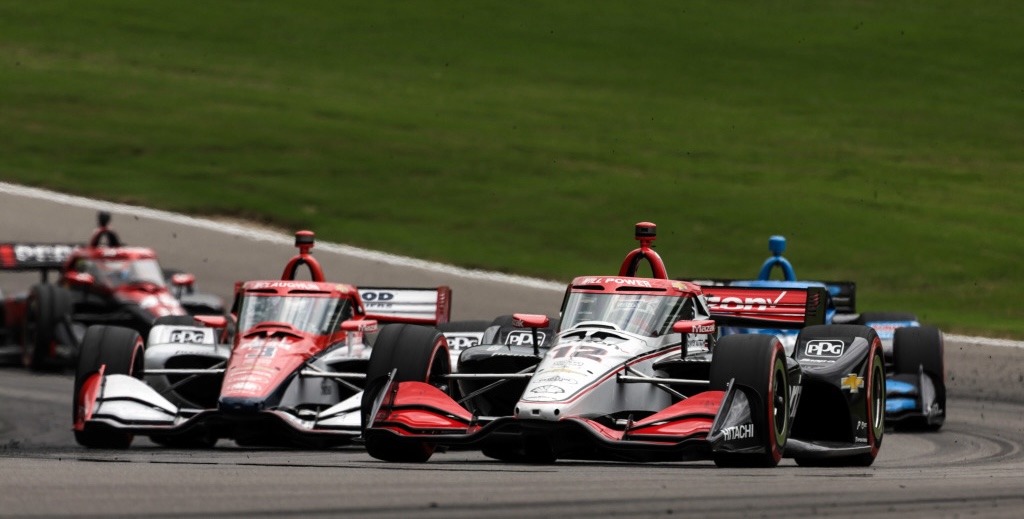
LET’S TALK MORE ABOUT THE DRIVING SIDE. IS THE ERS A MANUAL OR AUTOMATED THING?
It’s both, but in unique ways.
On the harvesting side, drivers can capture energy manually by pressing a button, or squeezing one of the clutch paddles on the back of the steering wheel -- which are only activated to behave as a regeneration tool above 50mph or so -- when they want. And the ERS can also be instructed to harvest automatically once the ECU sees braking pressure being applied, or if it sees partial throttle being used, or to automatically regenerate when it sees braking pressure and partial throttle.
The decision on how many of those options will be used is up to the driver, team, and their ICE manufacturer.
When it’s time to deploy, IndyCar does not allow automation in any way. For the ERS power and torque to be unleashed, the driver must choose to do so and press the deployment button on the steering wheel.
SINCE THE ERS UNITS PRIMARILY WORK UNDER BRAKING, ARE THERE ANY CHANGES TO THE BRAKING SYSTEM?
Yes on the mechanical side.
Since the cars were getting heavier with the ERS at some point in 2024, a slightly larger braking package was implemented -- bigger brake discs, for example, to help slow the beefier cars -- as part of the hybrid changeover. That happened at the start of the season, and now the bigger brakes will have the bigger weight they were designed to manage.
ARE THE BRAKING CHANGES LIMITED TO THE BRAKING PACKAGE ITSELF?
Correct. There are no new electronic braking aids like anti-lock braking for IndyCar drivers, nor did IndyCar adopt a brake-by-wire system like some other series use. It’s 100-percent analog and under the control of the driver’s foot and the brake bias adjuster knob like it was at the last pre-hybrid IndyCar race.
In IMSA, the hybrid GTP cars use an Electronic Braking System (EBS) control module from Bosch that intervenes when the GTPs are harvesting energy under braking and reduces brake pressure to the rear axles. Since the MGU is like a big extra brake when it’s spinning and harvesting, which would make it easy to lock the rear tires under braking when a driver is smashing the brake pedal, the EBS takes the IMSA MGU’s braking effect into account and manages the hydraulic pressure the driver applies to keep the rears from locking.
As the IMSA MGU decreases its harvesting, or the driver decreases brake pressure as they approach the corner, the EBS is constantly adjusting -- simulating the effects of anti-lock braking at the rear axles -- until braking is finished.
That’s IMSA’s electronic braking assistance system. IndyCar has none of this within its hybrid package.
THAT DOESN’T SOUND OPTIMAL
It isn’t.
Of everything that’s happening with IndyCar and hybridization, the changes to the behavior of the cars under braking has probably consumed more time and effort to tune and adjust in testing than any other function from the teams’ perspective.
Picture this: The pole-winning driver rockets into Mid-Ohio’s corners in the opening laps and has fresh tires and a full tank of fuel. If the car’s balance is good and the tires aren’t wearing at a rapid rate, they should be fine under braking when they harvest and the MGU fires up and acts like a fifth brake while regenerating energy. When the balance is strong, the MGU helps to slow the car, which improves performance.
But what if the balance starts to go, or the rear tires get torched halfway through the stint? Houston (and Mid-Ohio, and Toronto, and so on), we have a problem.
Thanks to the MGU behaving like an extra brake, harvesting while the car is a handful could easily lead to lockups, at best, or spins, at worst. Minus an EBS system to manage such things, the concerns over stability in the brake zones could become very real.
Enough so that, as some IndyCar race engineers have shared, they won’t be surprised if their drivers decide to abandon using the ERS altogether later in their stints if the tires are tired and braking becomes too unstable.
ARE THERE NO MEANS WHATSOEVER FOR DRIVERS TO DEAL WITH ERS-INSPIRED BRAKING INSTABILITY?
There’s nothing they can do electronically to the brakes, but in another cool development, there are harvesting maps loaded into the ECU that drivers can use through the turning of rotary knobs on the steering wheel and selecting the map that’s best for the situation. That’s what teams and manufacturers have been doing aplenty to develop in testing.
It takes a moment to turn one rotary to activate the harvesting maps, and then turn the other rotary to the map you want, but a ton of work has gone into giving drivers some wiggle room to reduce how aggressively the MGU does its harvesting.
THERE’S ANOTHER IMPORTANT THING FOR DRIVERS TO CONSIDER BEFORE BRAKING, RIGHT?
That’s for certain sure!
When the balance is right, drivers need to arrive at important braking zones with the ESS at less than a 100-percent charge.
Referring back to how the MGU helps to slow the car while harvesting under braking, it won’t perform that job if the ESS is full. It’s an obvious thing to say, but if the ESS is completely charged, there’s nothing for the MGU to do in the brake zone.
So in order to reap the benefit of using the MGU to improve braking performance, the driver must remember to arrive in the brake zone with an ESS that can accept a charge.
Show up at the end of a long straight with a 100-percent full ESS, and don’t be surprised if you’re being passed by someone who arrived with 80 percent.
HOW MUCH DOES THE ERS PACKAGE COST?
According to some teams, IndyCar has set the 2024 lease price for the partial season of use at approximately $90,000, but I couldn’t get an exact number. The full-season lease in 2025 is expected to be around $200,000.
WHO’S HANDLING THE ASSEMBLY, MAINTENANCE, AND SERVICING OF THE ERS UNITS?
That’s Ilmor Engineering, the Michigan-based company that’s celebrating its 40th year in business which also supplies Chevy with its championship- and Indy 500-winning 2.2-liter twin-turbo V6 ICEs.
An Ilmor transporter carries the units in custom rolling crates, and once they’re received by the teams, those teams are not allowed to modify or manipulate the ERS package inside the bellhousings in any way.
If there are issues that emerge with the ERS, an Ilmor technician will be called to troubleshoot and resolve the problem -- fix the matter, if possible, or trigger the spec ERS bellhousing replacement process with IndyCar if needed -- in whatever manner is required.
WHAT HAPPENS IF SOMETHING INSIDE THE BELLHOUSING BREAKS?
Look for that process to mirror what happens when a Chevy or Honda engine malfunctions. The spec ERS bellhousing will go back to Ilmor’s Michigan base, undergo a full post-mortem, receive the necessary solutions to get it running again, and be returned to the pool of available inventory at an upcoming race.
It’s also worth noting that in the hybrid operations manual distributed to each team, there are a number of reminders about the expected care and use practices for the ERS units and how straying from those procedures could lead to failures and the costs of those failures being the responsibility of the team(s) in question.
Do as the manual says to do, and you’ll be fine and the replacement will fall within the annual lease price, or ignore the manual and be prepared to pay for it.
LIKE WITH THE V6 TURBO ENGINES, DO TEAMS GET A GRID PENALTY WITH AN UNAPPROVED ERS UNIT CHANGE?
Yes. The difference here is the new hybrid regulations give some latitude.
Teams get four ICEs from Chevy or Honda in their annual engine lease contracts, and if an entry goes over that number, it receives a grid penalty of nine positions on ovals and six on road and streets. It could be the manufacturer’s fault entirely, but if a car needs a fifth ICE, for whatever reason, it gets a penalty, and again with a sixth, and so on.
With the ERS units in this opening half-season of use, a failure and the need to go to a replacement won’t come with a penalty. I’d consider this to be a trial period while the series gets a feel for how truly reliable the ERS units will be in competition. If they’re good, the rules just might change in the future.
The only way an entrant gets an ERS grid penalty, which is the same 9/6 as the ICE, is if they request for the ERS to be changed, which could come as a result of user error. Here’s some of what the series wrote in the regulations:
Entrant Abuse – A Hybrid may be damaged by the actions of the Entrant, including but not limited to on-track incidents, the use of non-approved fluids, and continuing to operate the Hybrid outside of the limits outlined in the Operational Guidelines and Event Notes.
Changing a Hybrid before the Change-Out Mileage for Entrant Abuse is subject to the following: Entrant pays for the Hybrid's repair costs, including parts, labor, shipping, and travel costs for the Hybrid Manufacturer and INDYCAR personnel.
HOW ARE THE ERS UNITS DISTRIBUTED?
From an administrative perspective, that’s done by IndyCar in the same way they distribute the Chevy and Honda internal combustion engines: Randomly.
Just as IndyCar picks from the available pool of turbo V6 motors -- say Honda engine serial No. 42 -- and tells HRC US to present it to Dale Coyne Racing for use in its No. 18 car, IndyCar will instruct Ilmor to dispatch ERS unit serial No. XX to whatever team is in need.
HOW MANY ERS UNITS HAVE BEEN MADE?
I was told the initial production has resulted in just over 40 ERS bellhousings being readied and crated for delivery in May at the Indianapolis 500. I was also told during the preseason that the goal is to get closer to 60 ERS units made.
WHAT DOES THE SYSTEM WEIGH?
In isolation, the ESS, MGU, DC-DC converter, and the rest of the ERS package that fits in the Dallara bellhousing weighs 93.8 lbs. There’s a bit more weight to factor in, like the pump and hoses used to circulate coolant through the ESS and MGU, and the coolant itself, which is a gallon of fluid that adds about eight pounds, and the new and dedicated ERS radiator in the right sidepod that cools the fluid.
But for the main ERS components, it’s 93.8 lbs, and with everything fitted into and delivered in a crate from Ilmor, with the pump and hoses and accumulator tank affixed to the 32.8-pound Dallara bellhousing, the as-delivered assembly from Ilmor weighs 126.6 lbs.
WHAT DO TEAMS DO ONCE THEY GET THE SPEC BELLHOUSING FROM ILMOR?
They begin the fitment process by installing studs into the bellhousing that will hold the suspension mounts. They’ll also install dampers, and everything else that’s needed to outfit the bellhousing before attaching the transmission and bolting it to the back of the engine.
HOW DO YOU CHARGE THE ESS BEFORE A SESSION?
There’s a charger that teams can connect to the car that plugs into the wall, so that’s one way to charge the ESS. The MGU can also be told to charge the ESS while the ICE is being warmed up in the garages.
CAN TEAMS OR MANUFACTURERS WRITE THEIR OWN SOFTWARE TO CONTROL THE ERS UNITS?
No, they cannot. But look for that to change in the years ahead.
DOES THE ESS REPLACE THE ALTERNATOR?
It does not. In IMSA, its big ESS battery powers the entire car and deletes the use of a traditional alternator that comes with an ICE. In IndyCar, the existing ICEs will continue to use their alternators to support themselves.
WHAT IF THERE’S A BIG CRASH AND THE ERS IS BROKEN AND SPILLED OUT ONTO THE TRACK?
If IndyCar’s AMR Safety Team comes across an ESS that’s been split open, the ESS should short itself out and become inert. It could get hot, and we’ll probably see some white smoke, but is unlikely to shock anyone in the cleanup process.
WHAT IS "SOC" AND WHY IS IT IMPORTANT?
Here’s another hybrid term to get accustomed to, and it’s the acronym for State of Charge, which is often pronounced as "sock." The SOC is what drivers will be actively managing with the ESS. My wife does this with her iPhone; she doesn’t like to let the battery get low, so she has it plugged into a charger most of the time. I doubt it’s gone below 80 percent since we got it.
In basic terms, that’s what IndyCar drivers will need to start monitoring with the ESS, and it’s not like they will never take the SOC down to its equivalent of being empty, but if they’re going to be using the ERS, they’ll need to track its SOC just like they track how much P2P is left and how much Shell fuel they have left.
The difference here, since IndyCar has its per-lap energy use maximum, is frequency of monitoring the SOC, which will be constant. Use and recharge. Use and recharge. Corner by corner, lap by lap.
And back to the "emergency" energy the ESS holds in case of a stall, the SOC in this ESS is between 30-60 volts. I’m also told the ESS can start a car with as little as 20v. But the key here with IndyCar’s SOC is the ESS isn’t an energy system that is configured to go from its full 60v down to 0v.
Drivers will be managing a SOC of 60-30v, which is their version of 100-0 percent.
I’M SURE THERE’S MORE…
…questions to be asked and answered, and I’m sure I’ve forgotten to cover some obvious items, but that’s about all I can think of and manage right now without having an MGU failure of my own.
If there’s more that come to mind, I might do a post-event follow-up in a Part 3, but let’s hope the 16 Q&A topics from Part 1 and the 49 delivered here have been useful and will make the transition to hybrids less of a mystery.
ShareThis is disabled until you accept Social Networking cookies.
Marshall Pruett
The 2025 season marks Marshall Pruett's 39th year working in the sport. In his role today for RACER, Pruett covers open-wheel and sports car racing as a writer, reporter, photographer, and filmmaker. In his previous career, he served as a mechanic, engineer, and team manager in a variety of series, including IndyCar, IMSA, and World Challenge.
Read Marshall Pruett's articles
Latest News
Comments
Disqus is disabled until you accept Social Networking cookies.
